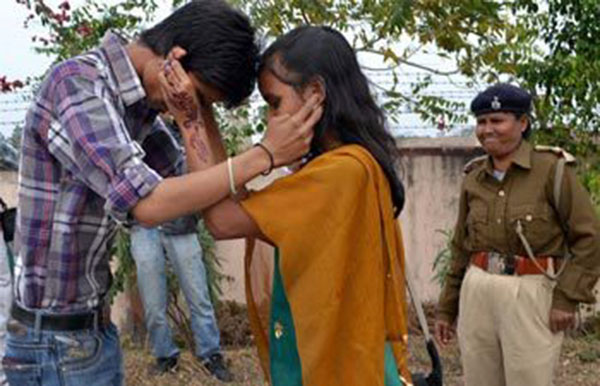I am always surprised when Valentine’s day rolls around in America as the fiery public outbursts don’t seem so prevalent. In contemporary India this day holds a special significance, especially for youngsters. More than the average date-night with an exchange of chocolates, gifts, and flowers, Valentine’s Day provides an opportunity for young practitioners to authenticate and reify their practice of dating and pursuing “true love.”
While arranged marriages are considered the moral norm, pursuing individual love fantasies are potentially frowned upon and discouraged in a lot of modern Indian homes. Hindutva followers (Vishwa Hindu Parishad) also recommend boycotting the day, labeling it Western, anti-Hindu, a moral corruption of Indian youth.

Indian youngsters, however, represent a marketable youth desiccated by parental norms, traditional values, and mixed sexual messages. Valentine’s Day appears as an oasis of freedom, filled with everything the society and parents condemn. They are marketable not only with chocolates, pretty red roses, and heart-shaped goods, but also marketable for practices that condone a “way of life” very different from those their parents seem to follow.
In this sense, participation in Valentine’s Day is a kind of religious act. Counter-culture, anti-traditional, and even anti-caste (according to the DMK), participation is of the utmost necessity to its ardent young fans and signifies their socio-cultural milieu.
While some think it’s quite inauthentic for Indians to be celebrating Valentine’s Day, Indian youngsters see it as a natural display of their modern values in response to their conservative parents. They may even connect across religious diversity on this issue. As a mode of rejecting the anti-dating model culturally imposed by parents, kids take to streets kissing in public, exchanging cards and flowers, hungry to share their love with each other.

Ultimately the observer has to notice that the plethora of critiques have made Indian celebrators broaden their definition of love, invoking Valentine’s Day for animals and celebrations with destitute elders and those mentally challenged.
“For charity and for love” seems to provide an example for a more neutral celebration, condoned by older members of the community. Each time the day is evoked the ritual is transformed. Even in America some call this day a “Hallmark holiday” and refuse to buy into the propaganda that tells you to monetarily express your love. Others reject the day, crying that it forces gender stereotypes and creates unwanted expectations. Far divorced from the roots of a religious tradition called Christianity, St. Valentine’s Day has morphed into a Hallmark holiday for Americans and an excuse to publicly proclaim dating culture for Indian youth.
What the Indian haters of Valentine’s Day need to realize is that it’s probably nothing personal. Young people have always wanted an excuse to make-out in the back rows instead of pay attention in class. Indians also just seem to “love love,” as a friendly visitor once told me. But we cannot ignore the fact that these practices are changing based on the lifestyle needs of modern urban Indians, and that they are also changing expectations and expressions of love.
The Hindutva respondents are like some Christians and Muslims who argue that participating in yoga might make you Hindu. They certainly aren’t wrong in implying that participation in a practice could transform your worldview. Far from being irrelevant to religion, opposing meanings of what the practice of Valentine’s Day may create only indicates that “you never know what you’re gonna get!”
This post originally appeared on Sociological Images, a Pacific Standard partner site.





